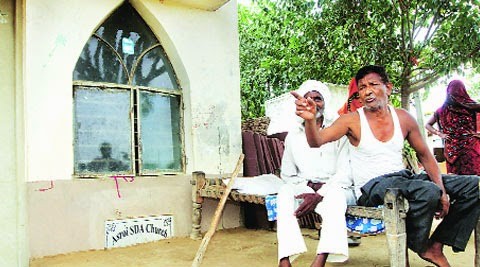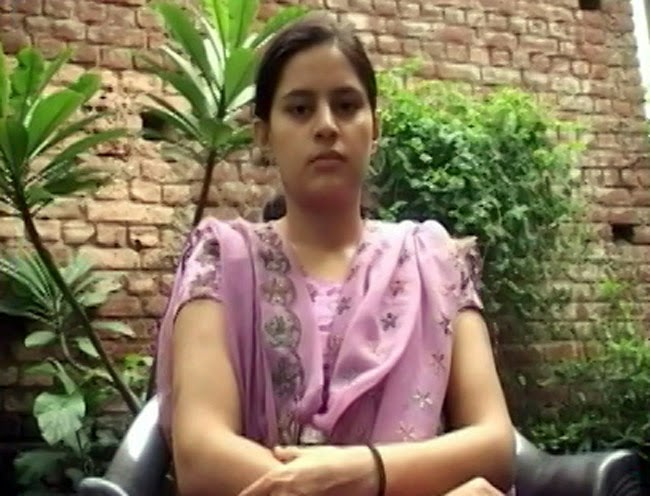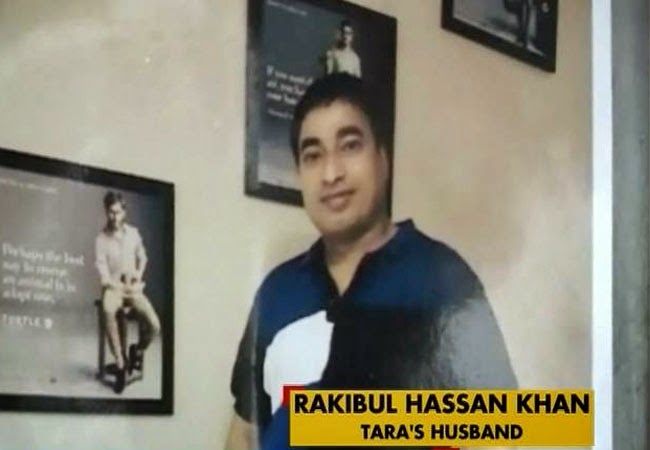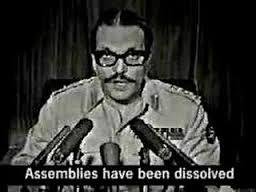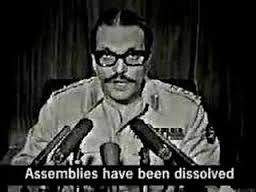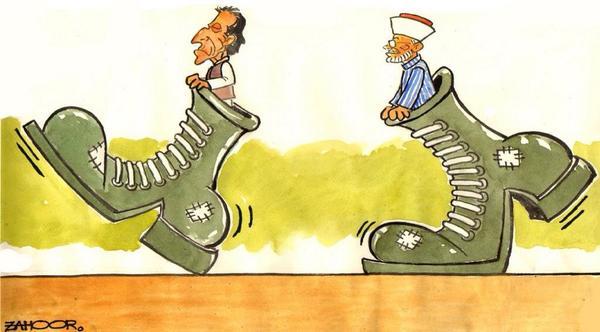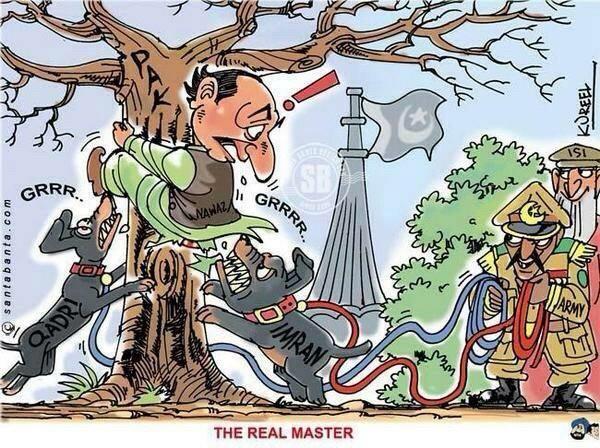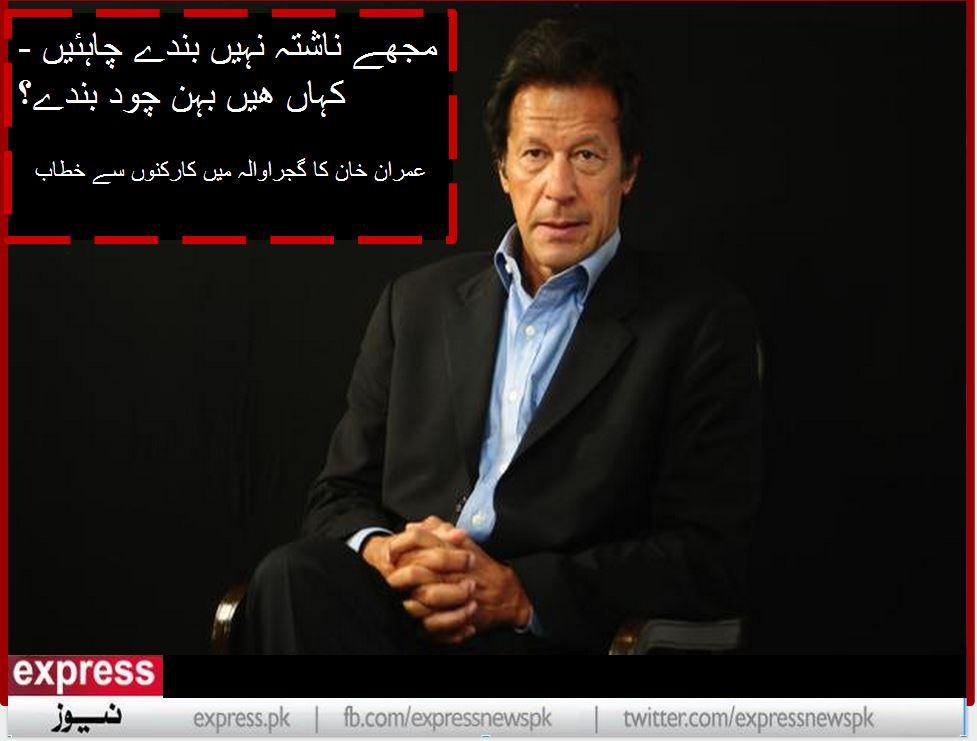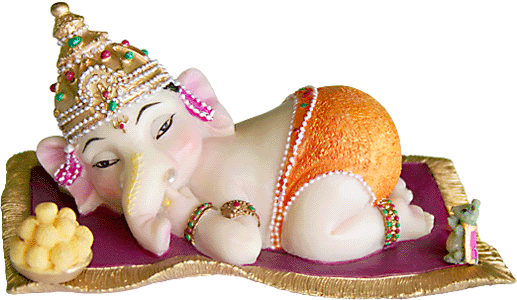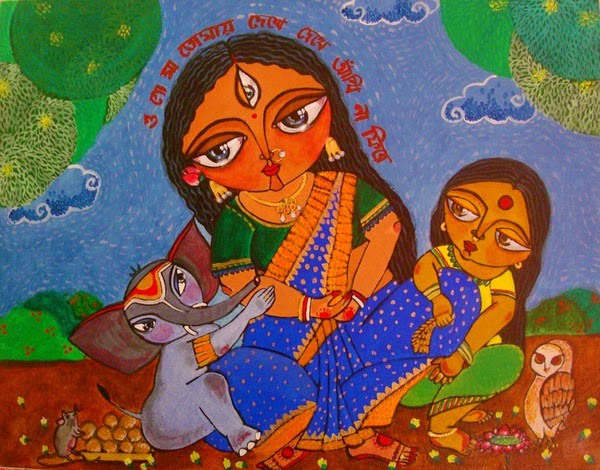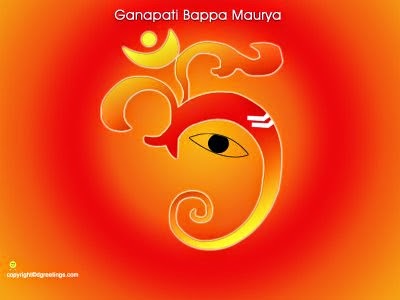Christian, how can you be a Dalit?”…..danger
is that the re-converts will seize the church and put up a temple…..“We will not let another church come
up….there is no Christian left,” said Rajeshwar Singh….
….
…
Just say NO to any C21 sequel of Babri the horror movie. The powers that be are of the opinion that beating up on minorities will help win elections. This is from the Gujarat playbook but the success there was more out of a sense of Gujarati asmita than Hindu pride. Already there is evidence (recent by-polls in Uttarkhand, Bihar, and Karnataka) that a backlash is taking shape. Finally, people who live by the sword must be prepared to die by the sword as well…a number of ruling party leaders/workers in UP have been murdered in the past few weeks.
As far as the Valmikis (Dalits) are concerned, the important question is how they survive in difficult conditions not their status as Hindus or Christians or Muslims. Religious status is not helpful for improving social status….otherwise there would be no need for separate Dalit Christian burial grounds and Dalit Muslim Mosques.
Religious conversion is a dangerous game and we are ambivalent about the ways to deal with this “problem.” A
true liberal will be for the freedom to convert (and
re-convert). Also if we were truly disadvantaged we would be happy to take money
from all of them buggers and adopt a new religion every week (that will
teach them).
As an aside, we would love to hear Prof. Kancha I-laiah defending pork eating as a millenium old Dalit tradition and his plans to support the cause of the pig-farmers – the Valmiki community – by launching a national pork festival (just like the beef
festivals he supports with so much enthusiasm).
…………
Another contentious issue is foreign money. We do not like Hindu NRIs or Christian Evangelicals or Wahabi Saudis to fund extremists in India and contribute to social disharmony. Religion is one of the most moneyed businesses in India, if people really want to fight conversion battles they can/should fight with local money.
Finally while we are not enamored of constructing yet one more temple or mosque or church, is it OK to insist that these folks first pay up for a 1000 toilets? And while they will be responsible for maintaining the place of worship, they should also take care of maintenance of the toilets. Call it the Temple-Mosque-Church-Toilet scheme (Yojana).
…………..
For 10 years, 29-year-old Ram Pal was a practising Christian, but
three days ago he converted and become a Hindu. The change in faith,
however, has not tangibly altered his life as the struggle to make ends
meet and the worry about the future of his children continue unabated.
….
Despite converting to Christianity in 2001, seven Valmiki families in
Asroi village were not accorded minority status. Instead, the village
register – maintained by the district administration – continued to
identify them as Scheduled Caste. This continued for over a decade, but
Ram Pal said that over the past few years, this ambiguous identity of
being neither a Christian nor a Dalit was becoming increasingly
difficult.
….
Ram Pal, who like others in his community raises pigs, said, “We
still used our SC identity to get our children admission in schools and
avail to various government schemes. We celebrated Holi and Diwali along
with Christimas. But people were asking questions. If you’re a
Christian, how can you be a Dalit?”
…
Another such Dalit, 44-year-old Ram Chandra, said, “Our children go
to school, on the basis of their SC certificates. But most drop out in
their teens and look for work in Hathras and Aligarh. Now that we’re
Hindu, at least no can doubt that we’re Dalits.”
….
On Wednesday, a church belonging to the 7th Day Adventists that
functioned from a small room in the village was “converted” into a
temple through a “shuddhikaran” (purification) ceremony that saw the
“ghar wapsi” (reconversion) of 72 Dalit Valmikis in the seven families
by various Hindu groups, including the RSS, VHP, Bajrang Dal and Arya
Samaj, said villagers.
….
Ram Pal said that the Dalit community did not want the puja to take
place within the church. “But, they said it was the only way for us to
become Hindus again,” he said.
…
Meanwhile, Khem Chandra, the Sangh pracharak and pramukh of Dharam
Jagaran Vivad in Aligarh asserted that the conversion was a “conscious
choice made by the Dalit Valimiki community”. However, the news of the
appropriation of the church spread tension in the area.
….
Fearing an outbreak of violence, the district administration locked
the room on Thursday. The Shiva poster, which was put up in the place
where a framed-photograph of Jesus Christ used to hang, has been taken
off “and kept in a safe place.” The belongings of the church – a cupboard, Christmas-lights and a single copy of the Bible – has also been kept in a locker.
….
The Christian community has alleged that such conversions were a part
of an RSS conspiracy, aimed at reaping electoral benefit. Seeking
immediate action against the perpetrators, civil rights activist John
Dayal said, “It is the right of an individual to convert to any religion
of his choice. But such mass conversions imply political, social and
physical coercion and the threat of violence. I condemn the coercion
and conspiracy of the Sangh Parivar which is using it to polarise the
religious environment in the state with an eye on the elections.”
….
Father Dominic Emmanuel, community leader and the editor of a
Christian magazine in Delhi said, “With the BJP in power, these groups
have become aggressive.” The village pradhan also pointed out that the BJP, for the first
time, had received an overwhelming majority of the votes in the village.
“Usually, the votes go for RLD. This time the elections was about
Hindus and Muslims and every one voted for Modi. That has been reflected
here,” said Vikas Choudhury, pradhan of Asroi.
….
But, while the RSS and the VHP have been making in-roads into the
village by working with the Dalit-Christian community, villagers said
that it was not simply a matter of faith, but also economics.
…
“Over the years, the activities of the Church here have receded. We
were promised schools, health care and better lives, but nothing came of
it. We haven’t been accorded minority status and soon, we feared, our
Dalit status would also be taken away from us,” said 54-year-old Guji
Lal, who added that Hindu groups in the past months had been
increasingly active in the village, convincing people to ‘reconvert’ to
Hinduism.
…….
When the
demolition of the Babri Masjid was threatened in 1991, Parliament en acted a
law prohibiting the conversion of any place of worship of one religion into
that of another, the only exception being the Babri Masjid itself. Back then,
the Vishwa Hindu Parishad sought to demolish 3,000 mosques, claiming these were
once temples.
…
This threatened 3,000 more clashes of the Babri Masjid variety,
stoking communal carnage and destroying Indian secularism. The Masjid was
ultimately demolished, but the new law helped prevent the disease spreading to
other places of worship.
The
problem has returned in unexpected fashion in Aligarh. It must be tackled
before it can grow.
In
Aligarh, several dalits were once converted to Christianity by the Seventh Day
Adventists. That organization then built a church for its new converts.
However, 72 of these dalit Christians have been re-converted to Hinduism by the
Dharam Jagran Vibhag (DJV), an RSS branch aiming to stop conversions of Hindus
to other religions, and attempt re-conversion.
The DJV
organized a “shuddhikaran” (cleansing ceremony) to wash away the Christian
“taint” in Aligarh. A Shiv poster was put up in the church, but later removed.
The alarmed Seventh Day Adventists locked up the church.
The danger
is that the DJV and re-converts will seize the church and put up a temple
there. “We have found a place near the chabootra (verandah). That is where we
will set up the temple. I don’t have anything to say for the church. We have
done the shuddhikaran in the building, whether they want to uproot the church
or raze it to the ground is their headache. We will not let another church come
up because there is no Christian left,” said DJV pramukh Rajeshwar Singh, who
came from Uttarakhand for the re-conversion.
Khem
Chandra, a local member of the DJV, added, “We will think about the church
building. It belongs to the missionaries, but the ground on which it stands
belongs to Hindustan. We will not compromise on our dharti (earth). We will
meet the villagers and decide about the temple (coming up).”
Now, our
Constitution and laws clearly permit the conversion and re-conversion of
individuals from and to any religion. The use of financial and other
inducements for conversion is illegal, but voluntary conversion is permitted
freely. The Seventh Day Adventists and the DJV both have a right to convert
people to their respective faiths.
…
The RSS claims that foreign Christian money
is being used to “buy” converts to Christianity. This has certainly happened in
some countries, leading to the derisive term “rice Christians”. But the
Christians point out that overseas Hindus pour enormous sums into Indian
religious organizations. Besides, Indian temples and organizations have
humungous wealth. If indeed faith can be bought, Hindu organizations have a
distinct financial advantage in India, and can easily outbid Christian ones.
But this
is just a distraction. Financial inducements for conversions are illegal. Only
voluntary conversions are legal.
What is
clearly illegal, however, is the destruction of a place of worship, or its
conversion into a place of worship for another sect or religion. The 72 dalits
in Aligarh can follow any religion they want, but cannot claim ownership of the
church, which belongs to the Seventh Day Adventists.
…
The mere fact that the 72
dalits worshipped in that church does not make it their personal property, to
be disposed of as they like. They can build a temple on any other land, close
or far from the church. But they cannot claim, as DJV leader Khem Chandra has
done, that the church building may belong to the Christians, but the ground
underneath belongs to Hindustan.
Hindustan
does not mean the exclusive land of religious Hindus. Historically, Hindustan
simply meant the land of the people of the Indus valley. The Constitution is
very clear that India is a land of multiple religions where persons of all
faiths are equal, and none can be discriminated against.
……
Link (1): stop-new-babri-movement-against-churches
Link (2): indianexpress.com/didnt-get-minority-status-so-embraced-hinduism
…..
regards
